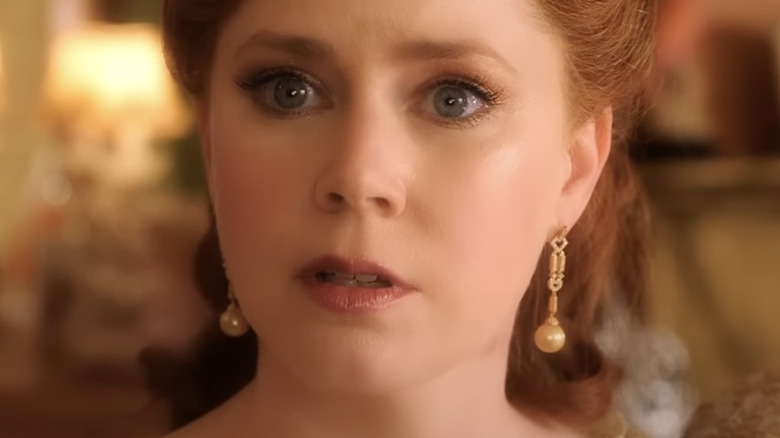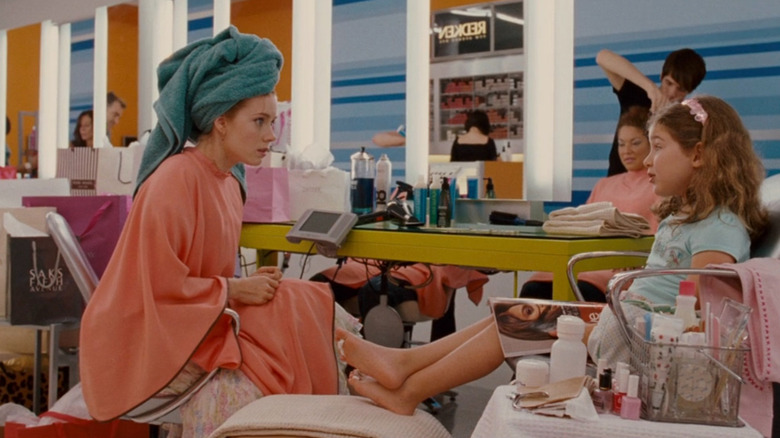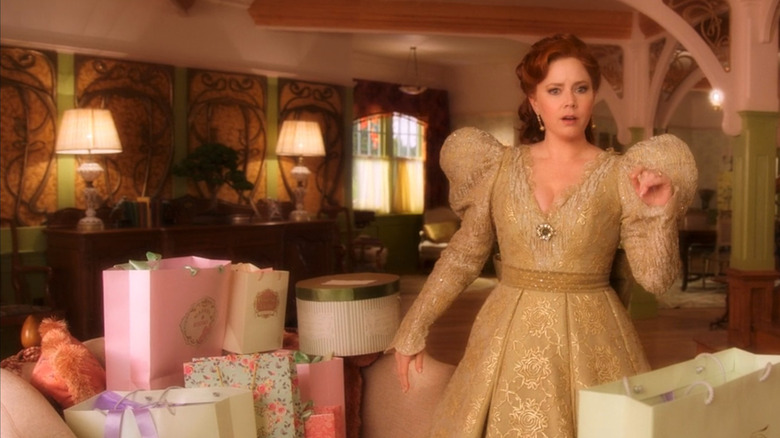Here's How Disenchanted Turns The Evil Stepmother Trope On Its Head
After years of waiting, Amy Adams is finally back as Giselle in "Disenchanted." Even though she's still got the shiny disposition viewers fell in love with in "Enchanted," a lot has changed for Giselle since viewers last saw her. Morgan (Gabriella Baldacchino) is all grown up, and Giselle and Robert have welcomed a baby named Sophia (played by infant twins Mila and Lara Jackson). The film takes the characters in a new direction but with the same tongue-in-cheek humor, fairytale references, and genuine emotion that made the original movie memorable.
One of the most interesting aspects of both films is that they explore different tropes that populate the myths, legends, and folk tales that have inspired and enthralled for generations. The original movie does a great job of exploring the superficiality lurking beneath the surface of fairytales and subverting the image of a typical damsel in distress. However, the sequel tackles another common fairy tale trope. Let's take a look at a touching scene that unites the original film and the sequel by examining the idea of the evil stepmother.
Giselle and Morgan bond
When we first meet Morgan in "Enchanted," she's a whimsical girl struggling to connect with her cynical father. She's looking for a glimpse of the magic that runs rampant in her storybooks. When she sees Giselle hanging from a billboard, Morgan instantly knows that she's met someone special. Giselle brings some much-needed levity into Morgan's life. Even though Giselle is initially desperate to get back to Andalasia, her growing connection to Morgan and Robert makes her reluctant to leave New York City. Wanting to see her beloved friends one last time, Giselle recruits Morgan to help her prepare for a grand ball.
Without a fairy godmother, Morgan suggests the next best thing: her dad's credit card. Cue an epic shopping montage, complete with a stop at the salon. It's a heartwarming scene that shows just how well Giselle fits into the family. Morgan, whose mother isn't in the picture, innocently asks Giselle if this is what it's like to go shopping with your mom. Giselle says she doesn't know but tells Morgan that she'll get a new mother when Robert marries Nancy (Idina Menzel). Morgan corrects her and says that Nancy will be her stepmother. However, Giselle insists that not all stepmothers are evil, citing Edward's stepmother as an example. Cut to Queen Narissa (Susan Sarandon) wreaking havoc in Times Square. The moment demonstrates that even though we're in the real world, this is still a fairytale, and stepmothers are bad news.
Another shopping spree, new roles
When we meet up with Giselle and Morgan in "Disenchanted," their dynamic has changed quite a bit. Morgan is an angsty teen who's grown weary of Giselle's constant optimism. Even though there's a brand new setting, there are plenty of references to the original movie, including another shopping trip for the mother-daughter duo. After her wish for a fairytale life brings magic into the real world, Giselle and Morgan find themselves in new roles. Morgan is the innocent maiden, and Giselle has become the very thing she fought to defeat in the first film: an evil stepmother.
In a callback to the original film, Giselle takes Morgan to buy a new gown for the upcoming festival. Only this time, Giselle is the evil stepmother trying to ruin everyone's fun. She later destroys the new dress Morgan so lovingly picked out, an allusion to Lady Tremaine from "Cinderella" that's just one of many Disney references in the movie. Even though Morgan has accepted Giselle as her mother, in reality, fairy tales are more cut and dry. In storybooks, there's no such thing as a kind, loving stepmother, a lesson the first film alludes to several times. In the sequel, Giselle succumbs to this trope, forcing Morgan to step up as the hero and break the curse.


